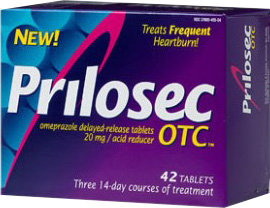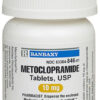Medication Overview
Prilosec, also known by the generic name omeprazole, is a proton pump inhibitor (PPI) that decreases the amount of acid produced in the stomach. It is commonly prescribed for conditions such as gastroesophageal reflux disease (GERD), Zollinger-Ellison syndrome, and peptic ulcer disease. Available in a delayed-release capsule form, it is typically taken orally once daily, 30 to 60 minutes before a meal.
Pharmacodynamics and Mechanism
Prilosec works by irreversibly inhibiting the hydrogen/potassium ATPase enzyme system located on gastric parietal cells. This action blocks the final step of acid production, effectively reducing gastric acidity. As a PPI, Prilosec provides prolonged inhibition of acid secretion compared to H2 receptor antagonists, leading to a longer period of relief from acid-related symptoms.
Indications for Use
Prilosec is indicated for the treatment and management of GERD symptoms, including heartburn and acid regurgitation. It is also used for the healing and maintenance of erosive esophagitis. Additionally, it is effective in managing hypersecretory conditions like Zollinger-Ellison syndrome and is used in combination therapies for the eradication of Helicobacter pylori infection in duodenal ulcer disease.
Dosing and Administration
The typical adult dose for GERD or erosive esophagitis is 20 mg once daily for up to 4 to 8 weeks. For Zollinger-Ellison syndrome, the dose can be adjusted according to the patient’s response and may vary from 60 mg to 120 mg daily, split into two doses. Patients should swallow the capsules whole with water, and it can be taken with antacids if necessary.
Drug Interactions
Prilosec has the potential to interact with various medications. It may affect the absorption of drugs like ketoconazole, atazanavir, and iron salts due to its effect on gastric pH. Prilosec can also inhibit CYP2C19 enzyme, affecting the metabolism of drugs such as clopidogrel, diazepam, and phenytoin. Concurrent use with other PPIs or H2 blockers is not recommended.
Observed Side Effects
Common side effects of Prilosec include headache, nausea, vomiting, diarrhea, and flatulence. Some patients may experience a rash, abdominal pain, or dizziness. Rare but severe side effects include acute interstitial nephritis, vitamin B12 deficiency, and bone fractures with long-term use. Symptoms should be reported to a healthcare provider for assessment.
Pharmacokinetics Details
Upon oral administration, omeprazole is absorbed rapidly, reaching peak plasma concentrations within 0.5 to 3.5 hours. It is extensively metabolized in the liver primarily via CYP2C19 and 3A4 pathways. The elimination half-life is relatively short, approximately 0.5 to 1.0 hour, but its acid suppression effect lasts for up to 72 hours owing to its irreversible binding to proton pumps.
Special Considerations
Special consideration should be given to patients with severe hepatic impairment due to altered drug metabolism and clearance. In elderly patients, a higher peak concentration and exposure are observed, yet dose adjustments are not generally necessary. Prilosec should be used cautiously in pregnant and breastfeeding women only if the potential benefit justifies the potential risk to the fetus or infant.
Storage and Handling
Prilosec should be stored at room temperature, between 20°C to 25°C (68°F to 77°F), away from light and moisture. Capsules should be kept in their original packaging until use to prevent exposure to air and humidity. Unused or expired medication should be disposed of according to local regulations to avoid accidental consumption or environmental contamination.
Comprehensive Monitoring
Patients on long-term Prilosec therapy should be monitored for magnesium levels, as hypomagnesemia can occur. Routine monitoring of bone density may be necessary in patients at risk of osteoporosis-related fractures. Liver function tests should be considered periodically in patients with existing liver disease. Regular assessment of treatment effectiveness and side effect profile is advisable.







Reviews
There are no reviews yet.